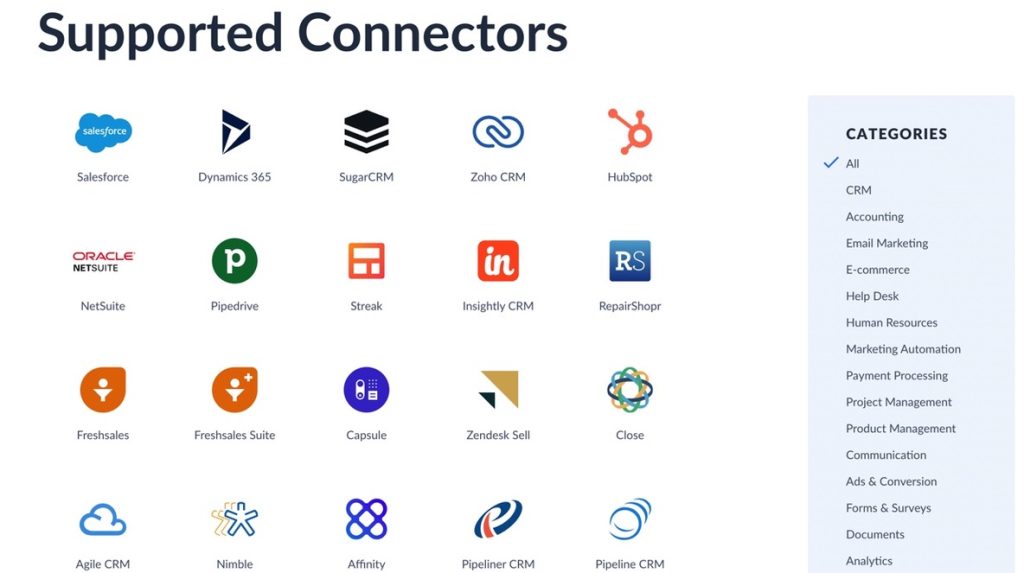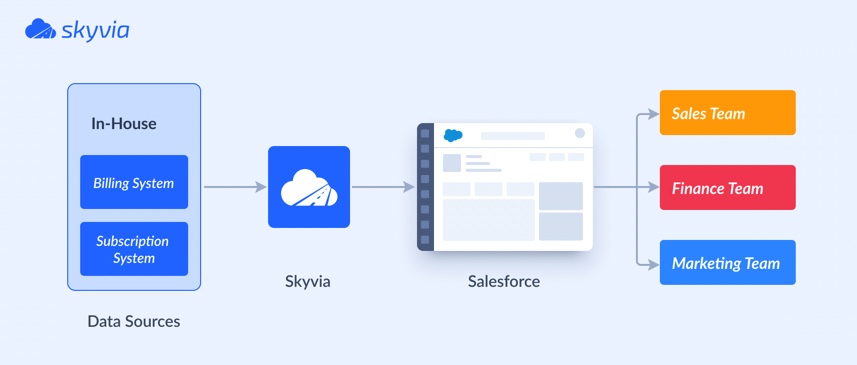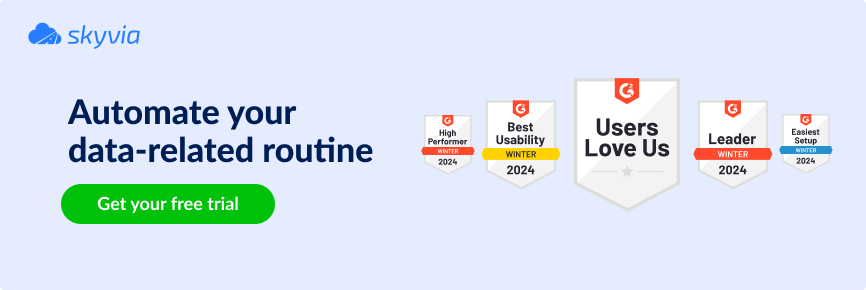
Nowadays, the market is flexible and changing fast. Businesses aiming to stay competitive must provide exceptional customer experiences, make informed decisions based on accurate data, and achieve operational efficiency. Data integration platforms, like Salesforce, help solve many critical challenges in this way.
In this article, we’ll discuss why integration data into Salesforce is so important, what benefits it may bring to users, and go through the most successful practices and integration patterns.
Integrating data with Salesforce means connecting it with other data sources and systems, like ERP, HR, finance, marketing platforms, etc., automatically exchanging data between them. Companies use many services, making this integration quite a challenge, – so why should businesses integrate data into Salesforce?
Let’s discover more reasons why data integration is essential.
Integration consolidates customer data from multiple touchpoints into Salesforce, offering a complete view of customer interactions to personalize:
For instance, businesses can synchronize customer data between Salesforce and an ERP system like QuickBooks or Oracle NetSuite. This ensures sales teams can access up-to-date information on customer orders, inventory levels, and payment statuses.
Integration tools can also automate the flow of support ticket information into Salesforce, helping sales and service teams to collaborate more effectively and resolve issues faster.
Watch the video on how to revolutionize your Salesforce experience and learn how you can automate your business processes.

As business needs to evolve, the integration setup can be easily adjusted or expanded to include new platforms or data sources.
Integrating Salesforce with additional third-party platforms means a more connected and advanced business ecosystem. It amplifies Salesforce capabilities, leveraging its CRM strengths while enhancing functionality, scalability, and flexibility, saving time. Honest pay-as-you-go pricing is also a substantial benefit in this case.

Integrating systems through secure platforms ensures that data exchange complies with data protection regulations. Data integration platforms offer secure data transmission channels and adhere to best practices in data security, helping businesses maintain the confidentiality and integrity of their data.
Here are the real user stories showing how integrating Salesforce with other platforms helps businesses in different cases.

Background: Exclaimer is a UK-based SaaS company that develops email signature management software. They selected Salesforce as a central data system and the single source of truth for all company departments. However, the fast data generation and integration between ERP and CRM systems became challenging.
Solution: They found Skyvia as a no-code system, providing drag-and-drop UI and simplifying data transfer without additional staff training.
Result: Analysts can connect Salesforce with the local billing system, enabling smooth billing data, AR, MRR, and subscription details flow, benefiting 25-30%.

Integrating Salesforce effectively into your business processes and systems landscape depends on:
Let’s consider the practice checklist and select the ones suitable for your business.
Integration patterns offer distinct advantages and trade-offs, and their suitability depends on factors such as performance requirements, data volume, latency tolerance, and system architecture. You may combine them to address diverse integration needs within your enterprise ecosystems. Let’s review the most common ones and see how Salesforce uses them.
This pattern means that one system sends a request to another and waits for a response before proceeding. It’s often used in scenarios requiring immediate feedback or a specific response. Examples include API calls, RPC (Remote Procedure Call), and synchronous web service interactions. While this pattern offers real-time responsiveness, it may cause latency and potential bottlenecks, especially in distributed systems.
Contrary to Request and Reply, the Fire and Forget pattern means sending a message or request to a destination without waiting for a response. Once the message is sent, the sender doesn’t expect any response from the recipient. This pattern is helpful for scenarios where immediate response is unnecessary, such as logging, event notification, or non-critical data updates. It reduces coupling between systems and can improve scalability and fault tolerance.
Batch data synchronization periodically synchronizes data between systems in bulk, typically at scheduled intervals. Instead of processing individual data changes in real time, batch synchronization collects and processes large data volumes in batches. This pattern is suitable for scenarios with high data volume, limited bandwidth, or where real-time synchronization is not required. Batch Data Synchronization helps optimize resource usage, reduce network overhead, and improve system performance.
A system invokes functionality or services hosted on a remote server or platform. This pattern is commonly used in distributed architectures, where components must communicate across network boundaries. Remote Call-In can involve synchronous (e.g., RPC, RMI) or asynchronous (e.g., message queuing) communication mechanisms. It allows using external capabilities or resources without replicating functions locally, promoting code reusability and modular design.
This pattern allows apps to access and manipulate data from multiple sources, like databases, web services, and files as if they reside in a single, unified data source. Instead of physically moving or replicating data, Data virtualization provides a layer of abstraction that dynamically integrates and shows data in real-time. This pattern facilitates data integration, federation, and abstraction without the need for complex ETL processes or data movement. Data virtualization promotes agility, reduces data duplication, and simplifies data access for applications and users.
As your business grows, its integration needs also evolve. And, to keep pace, companies need to consider strategic planning, scalability, flexibility, security, etc.
The Salesforce integration strategies of 2024 mean a balanced approach using various models, like API, asynchronous communication, and hybrid integration. Prioritize robust data management, scalability optimization, and strong security measures to ensure seamless connectivity, compliance, and value maximization across integrated systems.